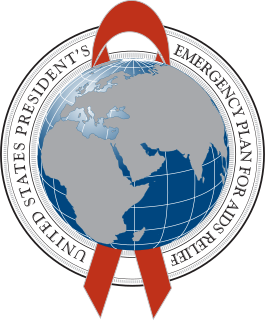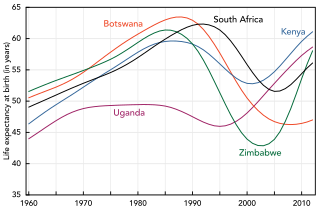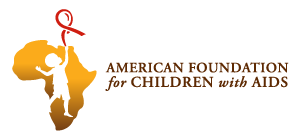
The AIDS epidemic, caused by HIV, found its way to the United States as early as 1960, but was first noticed after doctors discovered clusters of Kaposi's sarcoma and pneumocystis pneumonia in homosexual men in Los Angeles, New York City, and San Francisco in 1981. Treatment of HIV/AIDS is primarily via the use of multiple antiretroviral drugs, and education programs to help people avoid infection.

HIV/AIDS originated in Africa in the early 20th century and is a major public health concern and cause of death in many African countries. AIDS rates vary dramatically although the majority of cases are concentrated in Southern Africa. Although the continent is home to about 15.2 percent of the world's population, more than two-thirds of the total infected worldwide – some 35 million people – were Africans, of whom 15 million have already died. Sub-Saharan Africa alone accounted for an estimated 69 percent of all people living with HIV and 70 percent of all AIDS deaths in 2011. In the countries of sub-Saharan Africa most affected, AIDS has raised death rates and lowered life expectancy among adults between the ages of 20 and 49 by about twenty years. Furthermore, the life expectancy in many parts of Africa is declining, largely as a result of the HIV/AIDS epidemic with life-expectancy in some countries reaching as low as thirty-nine years.

The United States President's Emergency Plan For AIDS Relief (PEPFAR) is a United States governmental initiative to address the global HIV/AIDS epidemic and help save the lives of those suffering from the disease. Launched by U.S. President George W. Bush in 2003, as of May 2020, PEPFAR has provided about $90 billion in cumulative funding for HIV/AIDS treatment, prevention, and research since its inception, making it the largest global health program focused on a single disease in history until the COVID-19 pandemic. PEPFAR is implemented by a combination of U.S. government agencies in over 50 countries and overseen by the Global AIDS Coordinator at the U.S. Department of State. As of 2021, PEPFAR has saved over 20 million lives, primarily in Sub-Saharan Africa.
Camp Sizanani was founded as a joint venture between Global Camps Africa, a non-profit headquartered in Reston, Virginia, and HIVSA, a South African foundation that provides care and services to HIV-affected individuals. Operating in the Magaliesburg area in North West Province, South Africa, Camp Sizanani offers multiple camp sessions throughout the year for children aged twelve through nineteen whose lives have been affected by HIV/AIDS. The term HIV-affected can imply that an individual is infected with the virus, but it can also mean that the infection of family members or guardians have impacted the individual's life. While some children at Camp Sizanani are HIV+, many more have been orphaned by a parent's AIDS-related death or have family members coping with the disease. Nearly all of Sizanani's campers come from Soweto, Johannesburg's enormous township, to which many black Africans were relegated during South Africa's apartheid era. The children attend the camp free of charge; they are sponsored by Global Camps Africa and its donors.

HIV/AIDS in India is an epidemic. The National AIDS Control Organisation (NACO) estimated that 2.14 million people lived with HIV/AIDS in India in 2017. Despite being home to the world's third-largest population of persons with HIV/AIDS, the AIDS prevalence rate in India is lower than that of many other countries. In 2016, India's AIDS prevalence rate stood at approximately 0.30%—the 80th highest in the world. Treatment of HIV/AIDS is primarily via a "drug cocktail" of antiretroviral drugs and education programs to help people avoid infection.
Young Heroes is a charity, based in Mbabane, Swaziland. With a focus on orphaned and vulnerable children and their elderly caretakers, Young Heroes directly addresses the HIV/AIDS epidemic in Swaziland — the nation with the world’s highest rate of infection — on three fronts: education and prevention; healthcare; and impact mitigation/poverty reduction.
Sentebale is a registered charity, founded in 2006 by Prince Harry, Duke of Sussex, and Prince Seeiso of Lesotho. The charity runs a programme that helps children and adolescents struggling to come to terms with their HIV status by providing a fun, friendly and safe environment for them to address their mental health and wellbeing amongst their peers, giving them the tools and knowledge they need to lead long, healthy and productive lives.

HIV/AIDS affects economic growth by reducing the availability of human capital. Without proper prevention, nutrition, health care and medicine that is available in developing countries, large numbers of people are falling victim to AIDS.

HIV/AIDS in Lesotho constitutes a very serious threat to Basotho and to Lesotho's economic development. Since its initial detection in 1986, HIV/AIDS has spread at alarming rates in Lesotho. In 2000, King Letsie III declared HIV/AIDS a natural disaster. According to the Joint United Nations Programme on HIV/AIDS (UNAIDS) in 2016, Lesotho's adult prevalence rate of 25% is the second highest in the world, following Eswatini.

As of 2012, approximately 1,100,000 people in Malawi are HIV-positive, which represents 10.8% of the country's population. Because the Malawian government was initially slow to respond to the epidemic under the leadership of Hastings Banda (1966–1994), the prevalence of HIV/AIDS increased drastically between 1985, when the disease was first identified in Malawi, and 1993, when HIV prevalence rates were estimated to be as high as 30% among pregnant women. The Malawian food crisis in 2002 resulted, at least in part, from a loss of agricultural productivity due to the prevalence of HIV/AIDS. Various degrees of government involvement under the leadership of Bakili Muluzi (1994–2004) and Bingu wa Mutharika (2004–2012) resulted in a gradual decline in HIV prevalence, and, in 2003, many people living in Malawi gained access to antiretroviral therapy. Condoms have become more widely available to the public through non-governmental organizations, and more Malawians are taking advantage of HIV testing services.

Mozambique is a country particularly hard-hit by the HIV/AIDS epidemic. According to 2008 UNAIDS estimates, this southeast African nation has the 8th highest HIV rate in the world. With 1,600,000 Mozambicans living with HIV, 990,000 of which are women and children, Mozambique's government realizes that much work must be done to eradicate this infectious disease. To reduce HIV/AIDS within the country, Mozambique has partnered with numerous global organizations to provide its citizens with augmented access to antiretroviral therapy and prevention techniques, such as condom use. A surge toward the treatment and prevention of HIV/AIDS in women and children has additionally aided in Mozambique's aim to fulfill its Millennium Development Goals (MDGs). Nevertheless, HIV/AIDS has made a drastic impact on Mozambique; individual risk behaviors are still greatly influenced by social norms, and much still needs to be done to address the epidemic and provide care and treatment to those in need.

Rwanda faces a generalized epidemic, with an HIV prevalence rate of 3.1 percent among adults ages 15 to 49. The prevalence rate has remained relatively stable, with an overall decline since the late 1990s, partly due to improved HIV surveillance methodology. In general, HIV prevalence is higher in urban areas than in rural areas, and women are at higher risk of HIV infection than men. Young women ages 15 to 24 are twice as likely to be infected with HIV as young men in the same age group. Populations at higher risk of HIV infection include people in prostitution and men attending clinics for sexually transmitted infections.
There is a relatively low prevalence of HIV/AIDS in New Zealand, with an estimated 2,900 people out a population of 4.51 million living with HIV/AIDS as of 2014. The rate of newly diagnosed HIV infections was stable at around 100 annually through the late 1980s and the 1990s but rose sharply from 2000 to 2005. It has since stabilised at roughly 200 new cases annually. Male-to-male sexual contact has been the largest contributor to new HIV cases in New Zealand since record began in 1985. Heterosexual contact is the second largest contributor to new cases, but unlike male-to-male contact, they are mostly acquired outside New Zealand.
The relationship between religion and HIV/AIDS has been an ongoing one, since the advent of the pandemic. Many faith communities have participated in raising awareness about HIV/AIDS, offering free treatment, as well as promoting HIV/AIDS testing and preventative measures. Christian denominations, such as Lutheranism and Methodism, have advocated for the observance of World AIDS Day to educate their congregations about the disease. Some Churches run voluntary blood testing camps and counselling centers to diagnose and help those affected by HIV/AIDS.

The American Foundation for Children with AIDS (AFCA) is a non-profit organization that helps children in sub-Saharan Africa, as well as their guardians, who are HIV positive or who have contracted AIDS and lack access to appropriate medical care. Sub-Saharan Africa has been most affected by the HIV/AIDS epidemic, given that of all new HIV infections in the world, those in sub-Saharan Africa account for more than two-thirds of that number, as of 2008. In helping to fight the battle against HIV/AIDS in sub-Saharan Africa, AFCA provides critical antiretroviral medicine and other related medications, medical equipment and supplies, sustainable food solutions for families and institutions helping orphans, emergency supplies needed by the institutions in AFCA's targeted areas, as well as critical support for the prevention of HIV/AIDS, which included training of personnel. Currently, AFCA collaborates with twenty-eight partners in the Democratic Republic of the Congo, Kenya, Malawi, Uganda, and Zimbabwe.
The Naz Foundation (India) Trust is a non-governmental organisation (NGO) in that country that works on HIV/AIDS and sexual health. It is based in the Indian capital of New Delhi.

The affected community is composed of people who are living with HIV and AIDS, plus individuals whose lives are directly influenced by HIV infection. This originally was defined as young to middle aged adults who associate with being gay or bisexual men, and or injection drug users. HIV-affected community is a community that is affected directly or indirectly affected by HIV. These communities are usually influenced by HIV and undertake risky behaviours that lead to a higher chance of HIV infection. To date HIV infection is still one of the leading cause of deaths around the world with an estimate of 36.8 million people diagnosed with HIV by the end of 2017, but there can particular communities that are more vulnerable to HIV infection, these communities include certain races, gender, minorities, and disadvantaged communities. One of the most common communities at risk is the gay community as it is commonly transmitted through unsafe sex. The main factor that contributes to HIV infection within the gay/bisexual community is that gay men do not use protection when performing anal sex or other sexual activities which can lead to a higher risk of HIV infections. Another community will be people diagnosed with mental health issues, such as depression is one of the most common related mental illnesses associated with HIV infection. HIV testing is an essential role in reducing HIV infection within communities as it can lead to prevention and treatment of HIV infections but also helps with early diagnosis of HIV. Educating young people in a community with the knowledge of HIV prevention will be able to help decrease the prevalence within the community. As education is an important source for development in many areas. Research has shown that people more at risk for HIV are part of disenfranchised and inner city populations as drug use and sexually transmitted diseases(STDs) are more prevalent. People with mental illnesses that inhibit making decisions or overlook sexual tendencies are especially at risk for contracting HIV.
Children in Uganda are regularly exposed to many preventable health risks. According to the WHO, the country ranks 186th out of 191 eligible countries in life expectancy. The country also ranks 168 out of 188 in infant mortality rates, with a lower rank reflecting lower infant mortality. There are also about 97 infant mortalities out of 1,000. There are many cultural factors influencing the current health status of Uganda including the negative stigmas associated with sex, and the wood-burning stoves. The former of these has resulted in a severe lack in education and communication necessary to improve the health and well-being of children. There are multiple factors negatively impacting the health of children in Uganda. Those factors include HIV/AIDS, malnutrition, lack of sanitation, vaccinations, insufficient drugs, and an insufficient number of motivated healthcare workers. The World Health Organization attributes the tragic situation to wars that occurred before 1986 as well as the HIV/AIDS epidemic. The HIV/AIDS epidemic has resulted mainly from the mother-to-child transmission that spreads from one generation to the next, which could have easily been prevented from educating mothers and providing them with medical treatment. Medical treatment could protect them and their children. The knowledge of HIV, how people can contract it, their individual HIV status and counseling for the disease. These are several factors that assist in the prevention of HIV/AIDS and the HIV/AIDS epidemic, which is the leading cause of the detrimental state of child health in Uganda.

The Catholic Medical Mission Board (CMMB) is an international, faith-based NGO, providing long-term, co-operative medical and development aid to communities affected by poverty and healthcare issues. It was established in 1912 and officially registered in 1928. CMMB is headquartered in New York City, USA, and currently has country offices in Haiti, Kenya, Peru, South Sudan, and Zambia.












